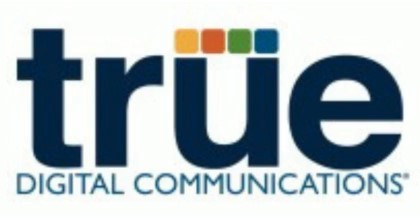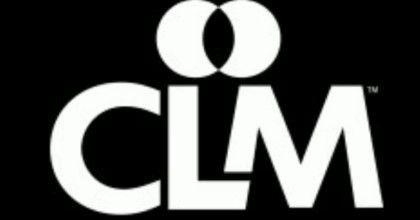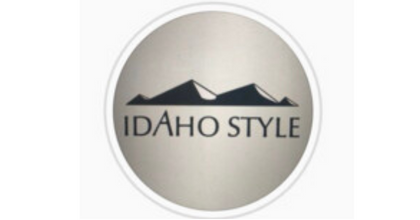
Top Usability Testing Companies
The global usability testing services market was USD 1.5 billion in 2024 and projected to reach USD 3.2 billion by 2033, expanding at 9.5% CAGR.
Usability testing companies specialize in evaluating how easy and effective it is for users to interact with a product, service, or digital interface like a website or app. They employ various methodologies to observe real users as they attempt to complete specific tasks, identifying pain points, areas of confusion, and opportunities for improvement.
These companies provide valuable insights into user behavior, helping businesses understand how their target audience actually engages with their products. By uncovering usability issues early in the development cycle or on existing products, they help optimize the user experience, leading to increased user satisfaction, higher conversion rates, and reduced support costs. Their expertise ensures that the final product is intuitive, efficient, and meets the needs of its intended users.
List of the Best Usability Testing Agencies | Top Usability Testing Companies in the World

-
Employees: 2 to 10
-
Min. Project amount: $25000
-
Country: U.S.A
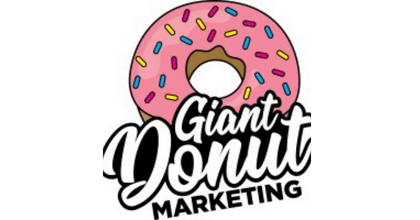
Giant Donut Marketing
-
Employees: 2 to 10
-
Min. Project amount: $25000
-
Country: U.S.A
-
Employees: 11 to 50
-
Min. Project amount: $25000
-
Country: U.S.A
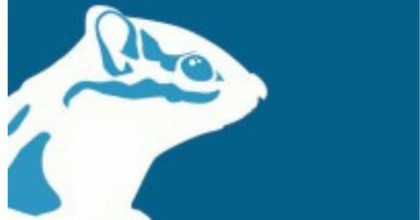
WDD We Do Digital
-
Employees: 11 to 50
-
Min. Project amount: $25000
-
Country: U.S.A
Blue Noda
-
Employees: 11 to 50
-
Min. Project amount: $25000
-
Country: U.S.A
-
Employees: 11 to 50
-
Min. Project amount: $25000
-
Country: U.S.A
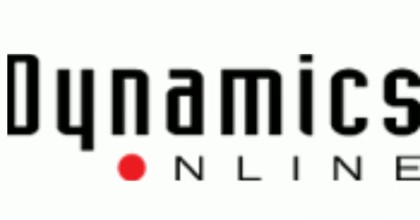
Dynamics Online
-
Employees: 2 to 10
-
Min. Project amount: $25000
-
Country: U.S.A

DIG Marketing
-
Employees: 11 to 50
-
Min. Project amount: $25000
-
Country: U.S.A

OMG Marketing
-
Min. Project amount: $25000
-
Country: U.S.A
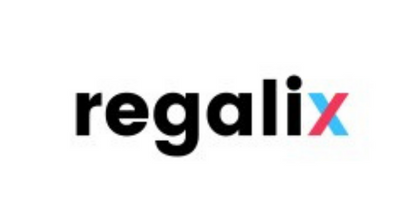
Regalix
-
Employees: 1,001 to 5,000
-
Min. Project amount: $25000
-
Country: U.S.A
1.What is a usability testing company?
Usability Testing Companies: Ensuring User-Friendly Experiences
Usability testing companies play a crucial role in the product development lifecycle by focusing on the end-user. They provide expert services to assess and improve the ease of use and effectiveness of digital products.
What is a Usability Testing Company?
A usability testing company is a professional service provider that specializes in evaluating the ease of use and effectiveness of digital interfaces such as websites, mobile applications, software, and even physical products. Their primary goal is to understand how real users interact with these interfaces to identify pain points, areas of confusion, and opportunities for improvement. They employ a range of structured testing methodologies, often involving observing users as they attempt to complete specific tasks.
These companies go beyond simply gathering opinions; they collect behavioral data and provide actionable insights based on user interactions.
A usability testing company is a specialized service provider that helps businesses evaluate how user-friendly and effective their digital products are. These companies conduct structured tests to observe real users as they interact with websites, mobile apps, or software platforms.
Primary Objective
The main goal of a usability testing company is to enhance the overall user experience (UX). By identifying friction points and usability issues, they provide actionable insights that improve how users navigate and engage with a digital product.
Key Services Provided
Usability testing companies typically offer a range of services, including:
Moderated and unmoderated usability testing
Remote and in-person user testing
Heuristic evaluation and expert reviews
User journey analysis
A/B testing and split testing
Analytics-based insights
UX audits and reporting
How They Work
These companies recruit users that represent your target audience and assign them tasks while tracking:
User behavior
Click patterns
Navigation flow
Error rates
Completion times
They then provide detailed feedback and visual reports, often including video recordings and heatmaps.
Who Needs These Services?
Usability testing companies are essential for:
Startups launching new products
Enterprises optimizing existing platforms
E-commerce businesses aiming to increase conversions
App developers refining UX before deployment
Why Partner with a Usability Testing Company?
Hiring a usability testing company ensures an objective, data-driven analysis of your product’s performance from the user’s perspective. This leads to:
Improved customer satisfaction
Reduced bounce rates
Higher conversion and retention rates
A more intuitive and accessible product
Their expertise helps businesses understand:
- How users navigate: Identifying confusing pathways or navigation elements.
- How users understand content: Assessing clarity and effectiveness of information.
- How users complete tasks: Measuring efficiency and identifying roadblocks in key user flows.
- User satisfaction: Gauging the overall experience and emotional response to the product.
By conducting these tests and analyzing the results, usability testing companies provide valuable recommendations to enhance the overall user experience (UX), making products more intuitive, efficient, and ultimately more successful in the market. They act as the voice of the user, ensuring that the final product meets their needs and expectations.
2.Why is usability testing important?
Usability testing helps identify user experience issues before launch, ensuring your product is intuitive, efficient, and meets user expectations. It can lead to better engagement, higher retention, and improved conversions.
Let’s elaborate on why it’s such a critical step in the development process:
The Critical Importance of Usability Testing:
Identifying User Experience Issues Before Launch: This is paramount. By observing real users interacting with your product (website, app, etc.) before it’s released to the wider public, you can uncover usability flaws that your internal team might have overlooked. Fixing these issues early is significantly cheaper and less damaging to your reputation than addressing them after launch when users are already frustrated.
Ensuring an Intuitive Product: Usability testing reveals whether your design and navigation are logical and easy for users to understand. An intuitive product minimizes the learning curve, allowing users to quickly grasp its functionality and achieve their goals without confusion.
Creating an Efficient Product: Testing helps identify bottlenecks and inefficiencies in user workflows. By streamlining these processes based on user behavior, you can create a product that allows users to accomplish tasks quickly and effectively, saving them time and effort.
Meeting User Expectations: Understanding your target audience and their expectations is crucial. Usability testing provides direct insights into whether your product aligns with these expectations in terms of functionality, design, and overall experience. Meeting these expectations leads to higher satisfaction and adoption.
Leading to Better Engagement: When a product is easy and enjoyable to use, users are more likely to spend more time interacting with it. Positive experiences foster engagement and encourage users to explore its features and content.
Driving Higher Retention: A frustrating or confusing user experience is a major reason why users abandon websites and uninstall apps. By addressing usability issues, you can significantly improve user retention, ensuring that people continue to use your product over the long term.
Improving Conversions: For businesses with conversion goals (e.g., sales, sign-ups, form submissions), usability testing can identify barriers in the conversion funnel. By optimizing the user flow based on testing insights, you can make it easier for users to complete desired actions, leading to higher conversion rates and ultimately boosting your bottom line.
Reducing Development Costs in the Long Run: While usability testing involves an initial investment, it can save significant costs down the line by preventing the need for major redesigns or fixes after launch. Addressing issues early is always more cost-effective.
- Gaining a Competitive Advantage: In today’s crowded digital landscape, a positive user experience can be a key differentiator. A usable and enjoyable product is more likely to stand out from the competition and attract and retain users.
3.What services do usability testing companies offer?
These companies typically offer services such as task-based testing, A/B testing, heuristic evaluations, remote user testing, heatmaps, analytics review, and detailed UX reports.
Let’s elaborate on each of these to provide a clearer understanding of what they entail:
Task-Based Testing: This is a fundamental method where real users are asked to perform specific tasks on the product (website, app, etc.) while being observed (either in person or remotely). The testers record the users’ successes, failures, frustrations, and the time taken to complete each task. This provides direct insights into the product’s usability for key user flows. For example, a user might be asked to “add a specific item to the shopping cart and proceed to checkout” on an e-commerce website.
A/B Testing (Split Testing): While sometimes offered by marketing or optimization companies, usability testing companies often incorporate A/B testing to compare two or more variations of a design element (e.g., button placement, headline, image) to see which performs better in terms of user behavior (e.g., click-through rates, conversion rates, time on page). This helps in making data-driven design decisions.
Heuristic Evaluations: This involves usability experts reviewing the interface against established usability principles (heuristics), such as Nielsen’s 10 Usability Heuristics. Experts identify potential usability problems based on these guidelines. This method is often quicker and less expensive than user testing but provides expert-based insights rather than direct user feedback.
Remote User Testing: This allows usability testing to be conducted with users in different geographical locations. Participants complete tasks on their own devices while being recorded via screen sharing and webcam. This provides a broader range of user perspectives and can be more cost-effective than in-person testing. Various platforms facilitate remote moderated and unmoderated testing.
Heatmaps: These are visual representations of user interaction on a webpage or app screen. They show where users click the most (click maps), how far they scroll (scroll maps), and where they move their mouse (mouse tracking). Heatmaps provide valuable data on user attention and engagement with different elements of the interface.
Analytics Review: Usability testing companies often analyze existing website or app analytics data (e.g., Google Analytics, Mixpanel) to identify areas where users might be experiencing difficulties, such as high bounce rates on specific pages or drop-off points in key funnels. This data can inform the design of usability tests and highlight areas needing investigation.
Detailed UX Reports: After conducting usability testing, these companies deliver comprehensive reports that summarize the findings, highlight key usability issues, provide video or audio recordings of user sessions (with consent), and offer actionable recommendations for design improvements. These reports often include severity ratings for identified issues to help prioritize fixes.
Beyond these core services, some usability testing companies may also offer:
- Eye-Tracking Studies: Using specialized equipment to track where users look on a screen, providing insights into visual attention and information processing.
- Surveys and Questionnaires: Gathering qualitative and quantitative data on user attitudes and preferences.
- Card Sorting: A technique used to understand how users categorize information, helping to design effective navigation structures.
- Tree Testing: Evaluating the findability of information within a website’s hierarchy.
- Accessibility Testing: Ensuring the product is usable by individuals with disabilities.
When choosing a usability testing company, consider their range of services, their expertise in your industry, their methodologies, and their ability to provide actionable insights that align with your business goals
4.How much does usability testing cost?
Costs vary depending on the scope of testing, tools used, and the number of participants. Basic tests may start around $2,000–$5,000, while comprehensive usability testing for larger platforms can range from $10,000 to $50,000+.
To further elaborate and ensure a comprehensive understanding, especially considering your location in Kurnool, Andhra Pradesh, India, where specific service availability and pricing might vary, let’s detail each:
Task-Based Testing: This is a cornerstone of usability testing. Real users, representative of your target audience, are asked to perform specific tasks on your website, app, or product while being observed. This observation can be in person (lab-based) or remote (via screen sharing and recording). The company analyzes the users’ success rates, time taken, errors encountered, and overall frustration levels. This provides direct, behavioral insights into the usability of key workflows. For instance, in an e-commerce app, a task might be “Find a red t-shirt under ₹500 and add it to your cart.”
A/B Testing (Split Testing): While often associated with marketing optimization, usability testing companies leverage A/B testing to compare different design variations of a specific element (e.g., button color, layout, headline) to see which performs better in terms of user interaction (e.g., click-through rates, conversion rates). This data-driven approach helps refine design choices based on actual user behavior.
Heuristic Evaluations: Experienced usability experts review your interface against established usability principles (heuristics), such as Nielsen’s 10 Usability Heuristics. They identify potential usability problems based on these guidelines. This is often a quicker and more cost-effective initial assessment compared to full user testing, providing valuable expert insights.
Remote User Testing: This allows testing with users across different geographical locations, including potentially your target audience in India or globally. Participants complete tasks on their own devices while their screens and voices (sometimes webcams) are recorded. This offers flexibility and a broader user base for testing. Platforms facilitate both moderated (with a facilitator guiding the session) and unmoderated (users complete tasks independently) remote testing.
Heatmaps: These visual tools provide insights into user interaction on web pages or app screens.
- Click Maps: Show where users click the most.
- Scroll Maps: Indicate how far users scroll down a page.
- Mouse Tracking/Movement Maps: Display how users move their mouse, often correlating with their visual attention. Heatmaps help identify areas of high engagement and potential areas of confusion or neglect.
Analytics Review: Usability testing companies often analyze your existing website or app analytics data (e.g., Google Analytics, Adobe Analytics) to identify user behavior patterns, drop-off points, high bounce rates, and other metrics that might indicate usability issues. This data can inform the design of usability tests and highlight specific areas needing investigation.
Detailed UX Reports: Following the testing and analysis, these companies deliver comprehensive reports summarizing their findings. These reports typically include:
- A clear overview of the testing methodology and participants.
- Identification of key usability issues, often categorized by severity.
- Video or audio recordings of user sessions (with user consent).
- Screenshots illustrating the issues.
- Actionable recommendations for design improvements, often with specific suggestions.
Additional Services You Might Find:
Depending on the company’s specialization and resources, they might also offer:
- Eye-Tracking Studies: Using specialized hardware to track users’ eye movements to understand visual attention and information processing.
- Surveys and Questionnaires: Gathering qualitative and quantitative data on user attitudes, preferences, and satisfaction.
- Card Sorting: A technique to understand how users categorize information, aiding in the design of effective navigation.
- Tree Testing: Evaluating the findability of information within a website’s information architecture.
- Accessibility Testing: Ensuring your digital product is usable by people with disabilities, adhering to accessibility guidelines (e.g., WCAG).
When looking for a usability testing company in Kurnool or India, consider their experience, the range of services they offer, their understanding of your target audience (including any specific cultural or regional nuances), their communication style, and their pricing. It’s beneficial to discuss your specific needs and get a tailored proposal.

